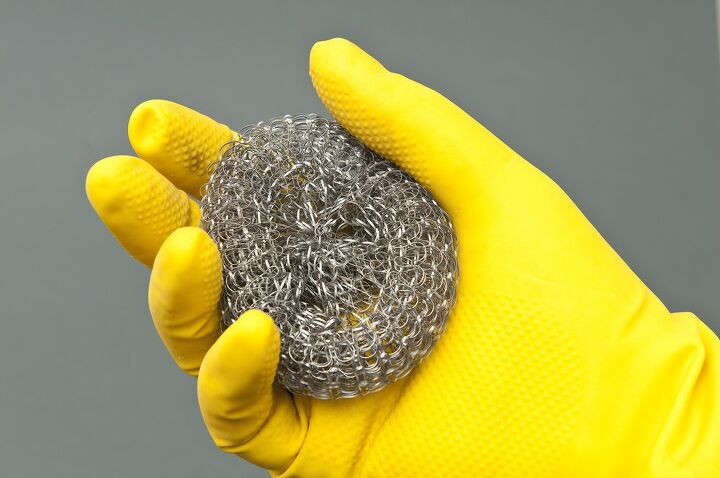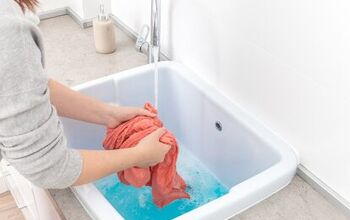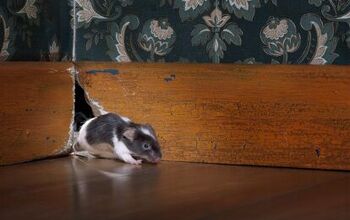What Grade Steel Wool For Mice? (Find Out Now!)

Since mice have the ability to squeeze through spaces as small as a nickel, it’s important to carefully inspect the interior and exterior of your home for holes. Even one small hole in the wall can result in a major infestation over time. To prevent mice from infiltrating your home, repair large cracks or holes and fill small ones with a combination of steel wool and caulking compound. This makes for an effective plug to seal small openings; however, “what grade steel wool is recommended?”
Medium grade stainless steel wool is the best to use for mice, and you can purchase it in bulk. It does a great job of getting into the holes and cracks from gnawing mice. However, if you have tougher rodents in your home, like rats, opt for heavy-duty steel wool as it will last much longer and give you better results overall. Also, make sure to check for access points in chimneys, gutters, doors, vents, and electrical and plumbing openings.
With that said, continue reading to learn more about how steel wool can be an effective defense against mice. You can find out what grade to use and more tips and tricks for filling mouse holes to prevent an infestation in your home, shed, or office building.
Do You Need Pest Control Services?
Get free, zero-commitment quotes from pro contractors near you.

How To Stop Mice From Entering Your Home
Mice are pesky little creatures that can crawl the tiniest holes to infiltrate your space. They set up shop in dark, unused corners and can survive on small crumbs and seeds. Often, people don’t even realize that they have mice in their homes until it becomes a major problem. If you don’t do anything, one or two mice can quickly become a full-on infestation.
The best, most effective, and most permanent way to stop mice from entering your home is “exclusion” or “blocking them out.” This means fully eliminating any openings that the mice can enter through.
It is especially crucial to mouse-proof any locations where food is processed, stored, or used. Although inspecting for holes is the first step, you also want to check electrical and plumbing entrances, gutters, doors, chimneys, and vents for rodent access.
Then, you want to seal off any opening that is larger than a quarter-inch, or about 0.6 centimeters. Smaller holes should also be sealed since mice can chew their way through and make the hole big enough for them to enter.
How Can Steel Wool Stop Mice?
Steel wool is probably a product you’re already familiar with, whether you use it to remove grease from dirty dishes or do repair work. However, you can use this same product to keep mice out of your home. The major reason that homeowners experience mice infestation has to do with the cracks in and around their homes.
If you don’t have a significant number of mice in your house or you just want to keep the ones you already see outdoors from making their way indoors, steel wool is an effective option. Since mice will chew right through wood, rubber, plastic sheeting, or a screen, a mixture of caulking compound and steel wool makes an ideal plug for tight spaces. Although mice can chew through steel wool, they often choose not to because of the sharp edges that can cut their nose as they gnaw.
However, mice can simply remove steel wool bundles by grabbing them with their feet to gain access. This is exactly why, for optimal protection, it’s recommended to combine steel wool with caulking to stop mice from getting into even the tiniest holes. Though, keep the following considerations in mind when choosing to use steel wool to stop mice:
- When using steel wool, you must remain vigilant and check areas frequently in case you need to apply the treatment more regularly.
- Over time, the steel wool may need to be replaced to keep mice out.
- Steel wool isn’t a long-term solution for keeping an infestation outside from making its way inside. Depending on your situation, you may need to call in a professional.
Steel Wool Grades
There are numerous grades and brands of steel wool to choose from, making it difficult to determine the best for stopping mice. You can purchase standard steel wool online or at your local home improvement store. As you’re shopping, keep the following considerations in mind regarding steel wool grades:
- Heavy-duty steel wool, including grades #2, #3, and #4, are the hardest and stiffest options. This makes them the most difficult for rodents to chew through. However, heavy-duty steel wool is much more challenging to work with. For this reason, it is best suited for large gaps, cracks, and holes where additional flexibility is needed.
- Lighter steel wool, including grades #0000 to #1, is more flexible. This makes them easier to fit into small ¼ inch or ½ inch sized holes where mice may get into your home.
What Grade Steel Wool For Mice?
With these grades in mind, what grade of steel wool is recommended for dealing with mice? Ideally, you would want to use a medium grade. Medium grade is stainless and available in bulk.
It does a great job at sealing holes that mice would otherwise gnaw through to get into your home. However, if you have tougher pests, such as rats, you’ll want to choose something stronger – heavy-duty steel wool.
If your rodent problem is just mice and no other pests, the medium-grade steel wool is enough to keep them out. Make sure to pair it with a caulking compound first.
Will Steel Wool Brillo Pads Keep Out Mice?
Brillo is the brand name for a type of scouring pad that is primarily used for cleaning. The pads are steel wool infused with soap. Since Brillo Pads are made of heavy-duty, commercial-grade steel wool, they can effectively plug up holes to stop mice. However, for best results, don’t forget to fortify the pads with a caulking compound.
How To Fill A Mouse Hole With Steel Wool
To prevent rodents from entering your home, your best bet is to seal off their entry points. After you’ve located all the potential mouse holes in and outside of your home, follow the steps outlined below to effectively fill all the necessary cracks and crevices using steel wool:
- Pack the hole tightly using the medium-grade steel wool in such a way that prevents any possible entrance.
- Cover the steel wool with silicone caulking. The steel will plug the hole and the caulking will prevent the mice from eating the wool or moving it out of the way to get through.
- Fill the hole using expanding spray foam. This step is optional, but once the foam offers additional protection against mice getting into your home. Once the foam expands completely, you can cut off any excess that protrudes into the room. Over time, the mice will likely break through or gnaw at the foam to get inside.
Note: Consider putting mice poison inside of the hole before filling it with expanding foam for added protection.
Do You Need Pest Control Services?
Get free, zero-commitment quotes from pro contractors near you.

Does Copper Steel Wool Stop Mice?
Many experts suggest using copper steel wool instead of regular steel wool to stop mice for a number of reasons. Copper wool is woven in such a way that it gets stuck in rodents’ teeth. This quality makes it even more difficult for them to chew through.
By using copper wool, you can skip the step of combining the material with caulking compound and stuffing it into mouse holes. Also, while steel wool is susceptible to rusting, copper wool is not. You won’t have to worry about getting rust stains on your outdoor siding or internal walls.
There are a number of steel wool pest control products on the market, like this Copper Mesh Roll for Rodent Control. These products are specially designed so you can cut them to fill gaps and cracks in various locations. You can use them in windows, walls, doors, and any other areas where mice can enter your home.
In Conclusion
Lots of things can attract mice to your home, and you can find various pest control products on the market to keep them out. Medium-grade stainless steel wool can help you plug up holes and cracks to prevent mice from getting in. In addition to plugging up the holes in walls, don’t forget to close up access points elsewhere.
Look for holes and cracks in pipes, vents, chimneys, electrical and plumbing entry points, and doors. If you’re dealing with larger rodents, you can opt for heavy-duty steel wool to get the job done.

Jessica considers herself a home improvement and design enthusiast. She grew up surrounded by constant home improvement projects and owes most of what she knows to helping her dad renovate her childhood home. Being a Los Angeles resident, Jessica spends a lot of her time looking for her next DIY project and sharing her love for home design.
More by Jessica Stone



























